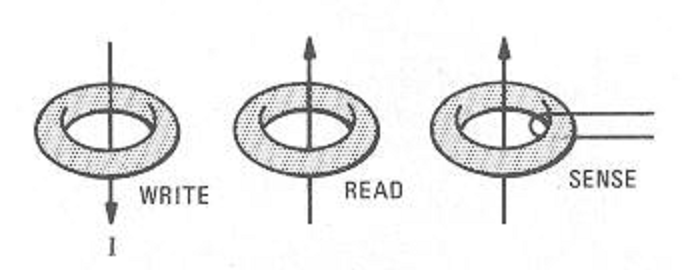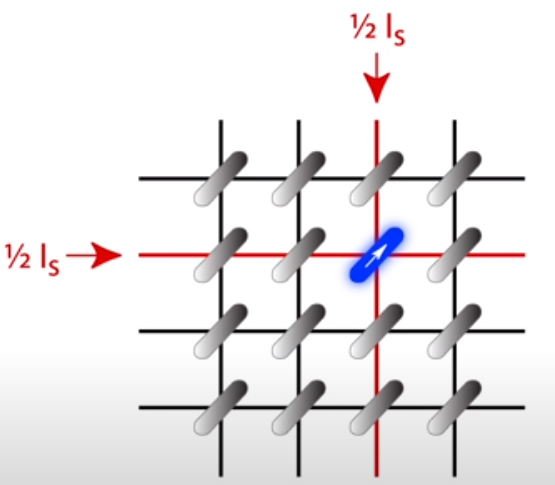Have you ever heard about magnetic-core memory?
in News
Computer memory nowadays is widely available and cheap. However, in the 1950s to 1970s, computer memory was a noble thing. At that time the cutting edge memory technology was the magnetic-core memory. It was physically huge and expensive. Therefore, computer programs need to be deeply optimized to fit the precious memory available. Despite the drawbacks, the magnetic core is reliable and was used to hold the programs that took humans to space and moon.
The magnetic-core memory had a strategic use in military and space equipment and vehicles, as it is relatively unaffected by electromagnetic disturbance and radiation. Core memory uses toroids of a hard magnetic material (e.g. ferrite) as transformer cores. The similarity with transformers facilitated the implementation of technology. The bit storing method (ones and zeros) in a core relies on using the hysteresis loop of the magnetic material. The core can be magnetized in two ways using a current wire (i.e. holding ‘1’ or ‘0’). PS. Click here, to remember the basic magnetics theory! The magnetized direction is established depending if you drive a forward or reverse saturation current (Is) in the current wire. To sense the magnetization, you can use a sensing wire. Then you have a one-bit non-volatile storage (i.e. it can retain its contents indefinitely without power)! :D

Elemental core memory. A strong (magnetizing) current pass through the wire and magnetizes the toroid/ring (core). A current in the opposite direction breaks down the magnetic field. If the toroid magnetization changes, a voltage pulse appears at the sensing winding. Image from: 1977 Radio-Electronics magazine hosted at Decode System.
In 1951, MIT’s professor Jay W. Forrester invented the magnetic-core array (PS. Click here to see his patent entitled ‘Multicoordinate digital information storage device’. It is awesome!). That was one of the most valuable patents at the time! His remarkable invention uses an array of ferrite toroids. The Xs (rows) and Ys (columns) were driving current lanes. X and Y lanes operate at half of the saturation current (1/2×Is). A core was magnetized if it’s local X and Y were ‘true’ (1/2×Is + 1/2×Is). Thus, bits could be addressed. A sensing wire was used to sense the values. Also, an inhibit wire was used as an auxiliary wire to preventing magnetizing unwanted cores.

Bit addressing at the blue core. Image from: CuriousMarc.
If you want to learn more about magnetic-core memory, I strongly recommend to look the at CuriusMarc video:
If you have curiosity to learn about computers used in the Saturn V, take a look at the SmarterEveryDay (Title: How did NASA Steer the Saturn V) and Linus Tech Tips (Title: The ACTUAL Computer from the Saturn V Rocket) videos:


